
If your Google Ads aren’t delivering the expected results, you’re not alone.
Watching your ad budget drain with little return is a common frustration.
But here’s the good news: You don’t have to start from scratch.
A Google Ads competitor analysis lets you adapt your rivals’ best strategies to improve your results. We’re talking more clicks and conversions by examining competitor keywords, ad copy, bidding strategies, and more.
In this guide, I’ll take you step-by-step through a Google Ads competitor analysis using proven tactics and tools.
You’ll gain strategies to outsmart your competition and get better results, no matter your skill level.
Let’s get into it.
How to Spy on Competitors’ Google Ads
The right tools can tell you quite a bit about your competitors. This includes the keywords they use, estimated cost-per-click (CPC), and much more.
Google offers several free tools that give you a glimpse into your competitors’ Google Ads strategies.
Here’s how to use them effectively:
Find Competitors Through Google Search
One of the easiest ways to check competitors’ Google Ads is by searching for your target keywords.
This simple step can reveal key information about who you’re up against and how they position themselves.
To get started, I recommend opening a new incognito browser window to avoid skewing results and search for your target keywords.
Pay close attention to:
- Who’s showing up: Identify the competitor domains that consistently appear in paid ads. Keep a list of these domains for later analysis using tools like Google Ads’ Auction Insights.
- Ad placements: Observe where the ads are placed. Are they always showing in the top positions? Do they dominate specific keyword types?

Imagine you’re running ads for CRM software targeted at startups.
When searching “best CRM for startups,” you notice HubSpot, Zoho, and Pipedrive consistently show up in the top ad placements.
This tells you they’re prioritizing this keyword. If one brand dominates the top spot, it may have a high Google Ads Quality Score or an aggressive bidding strategy.
Pro tip: Use the Ad Preview and Diagnosis Tool in Google Ads to avoid location-based ad skewing that might affect your search results. This tool allows you to simulate searches from different locations and see the ads being shown to your target audience.

Use Google Search to Analyze Competitors’ Ad Copy
Studying your competitors’ ads and landing pages can yield insights that show you what’s working in your industry.
By breaking these elements into sections and asking the right questions, you can uncover their key tactics. Then, adapt them to your advantage.
First, look at each ad or landing page’s headline. The headline is the main value proposition, which means it should be clear and compelling. Check if the messaging is emotional, benefit-driven, or feature-focused. It should align with the ad copy to meet visitor expectations.
Next, analyze the subheadline, which should expand on your competitor’s headline or clarify the offer. It should answer the question, “What’s in it for me?” and keep visitors engaged.
For example, in this ExpressVPN ad, the headline “Fast, Private VPN” emphasizes speed and privacy, while “ExpressVPN – Official Site” reinforces trust and credibility.

Meanwhile, the ad’s subheadline expands on the main message by addressing data security concerns.
“Protect Your Privacy from Your ISP” speaks to users who want to stay anonymous, while “No Activity or Connection Logs” reassures them their data isn’t tracked.
Now, check to see that the ad has a compelling call to action (CTA), which should make the desired action clear.
For example, “Get Free Trial” removes friction for new users. It emphasizes immediate access, encouraging users to try the product right away.
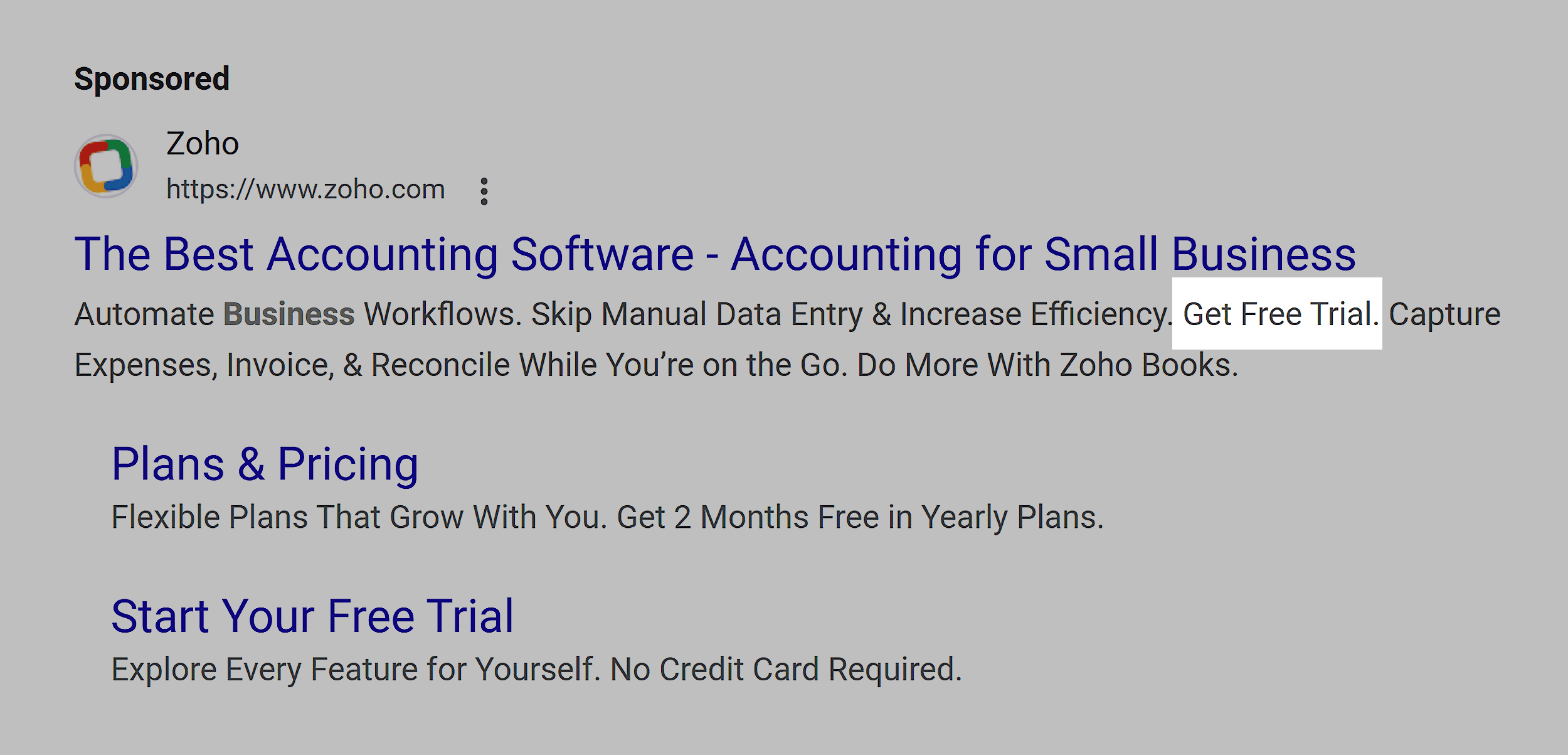
Another important element of your Google Ads competitors analysis is social proof.
Look for customer testimonials, logos, or case studies.
For instance, “Trusted by 20,000+ businesses” encourages users to explore customer feedback, reinforcing trust before they commit.

Don’t forget to assess the visuals. The hero images or videos on the ad’s landing page support its message.
They can be product images, lifestyle visuals, or videos.

Ensure visuals highlight the value proposition and draw attention to the call to action.
Finally, check your rivals’ ads for a form or conversion element.
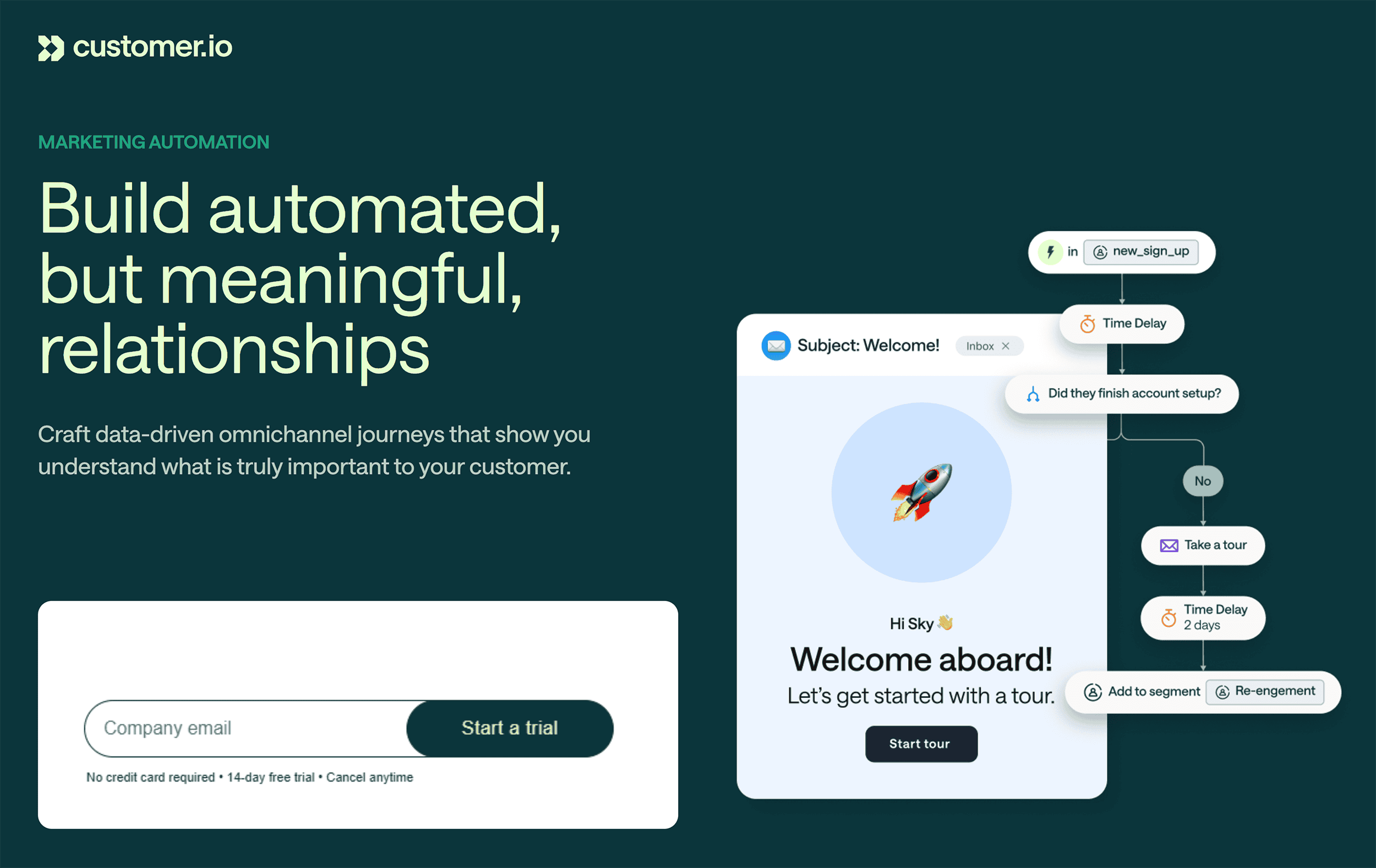
Simple forms with just a name or email encourage completion. Clearly stating “No credit card required” reassures visitors that they can access the offer with no upfront commitment, increasing conversions.
Leverage the Google Ads Auction Insights Report
The Auction Insights report in Google Ads is a powerful tool that gives you valuable data on your competitors’ performance. This includes which competitors are bidding on the same keywords as you.
Use this information to refine your strategy and stay ahead in the ad auctions.
To access it, navigate to “Campaigns” and select “Auction Insights.” Data is available for Search, Shopping, and Performance Max campaigns.
For this guide, we’ll focus on Search campaigns.
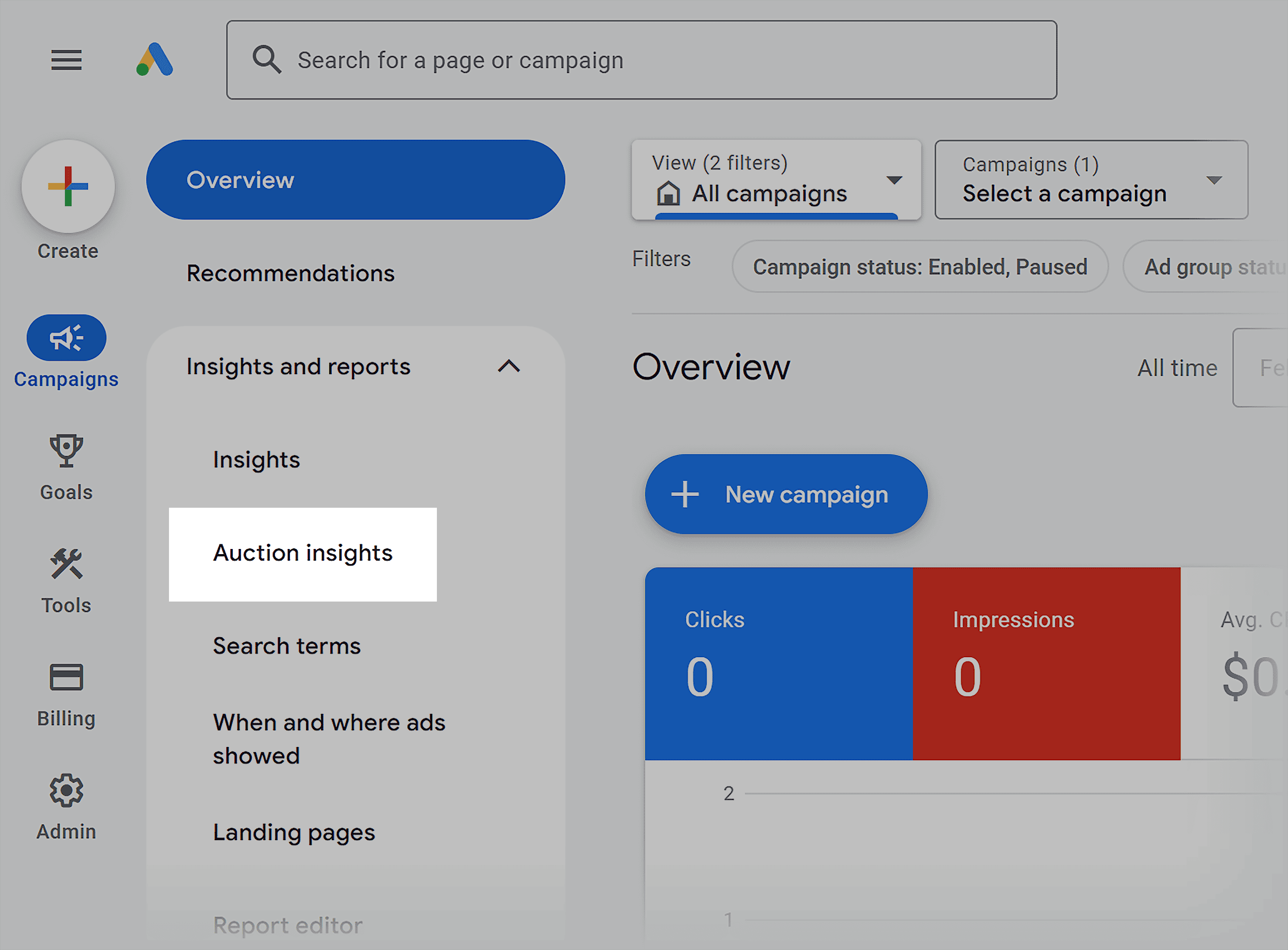
The Auction Insights report includes six key metrics:
- Impression Share: The percentage of impressions your ads get. It compares this to the total available impressions.
- Overlap Rate: How often your competitors’ ads appear at the same time as yours
- Outranking Share: How frequently your ad ranks higher than your competitors’ in auctions
- Position Above Rate: The percentage of times a competitor’s ad ranks higher than yours when both ads appear
- Top of Page Rate: How often your ad (or a competitor’s) appears at the top of the search results page
- Absolute Top of the Page Rate: The percentage of times your ad (or a competitor’s) is in the absolute top position
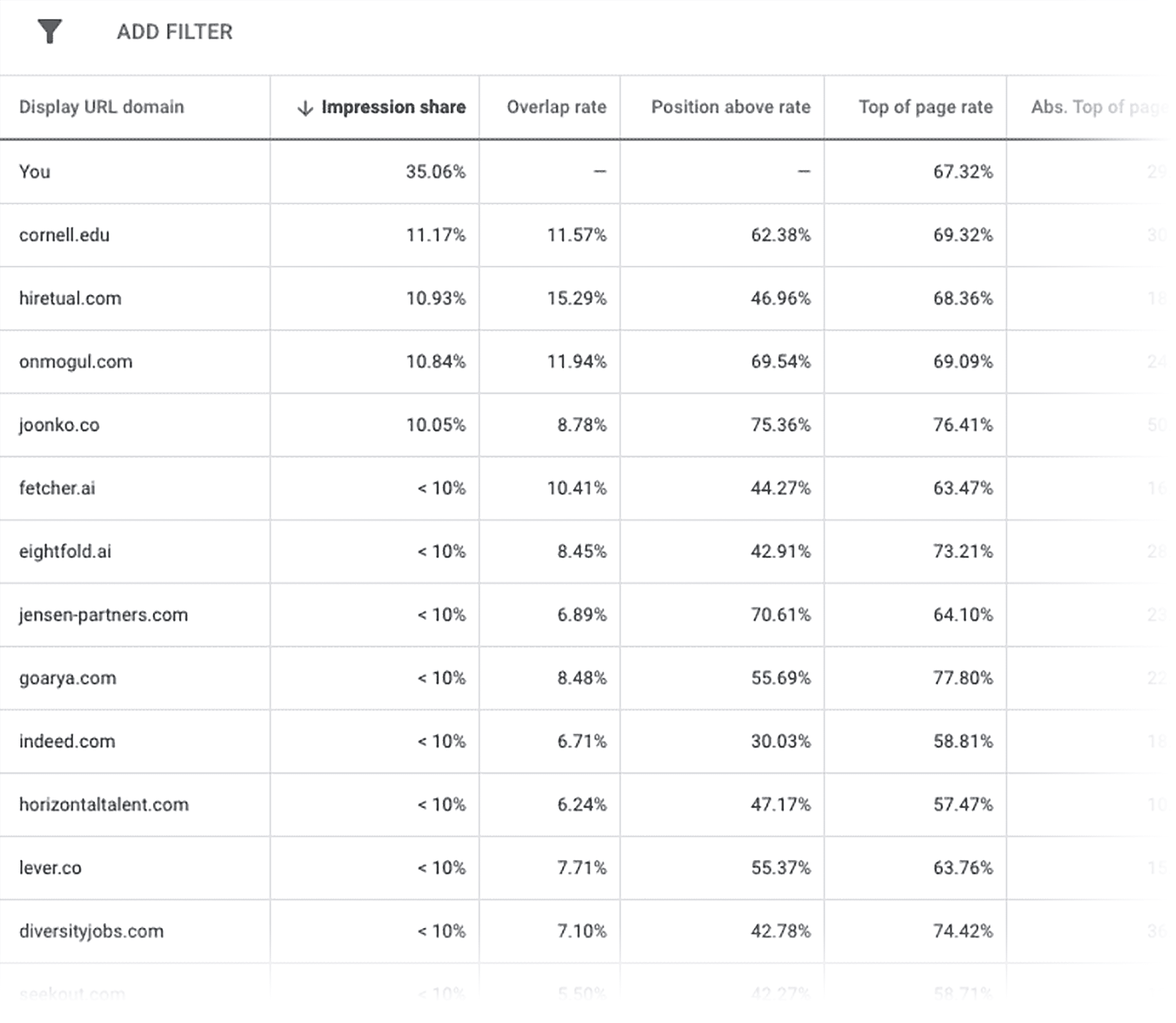
Explore Competitor Strategies with Google Ads Transparency Center
Google’s Ads Transparency Center is an essential tool for monitoring your competitors’ ad campaigns.
This feature provides a complete catalog of all ads running on Google’s platform. It offers insights into their messaging and promotional strategies.
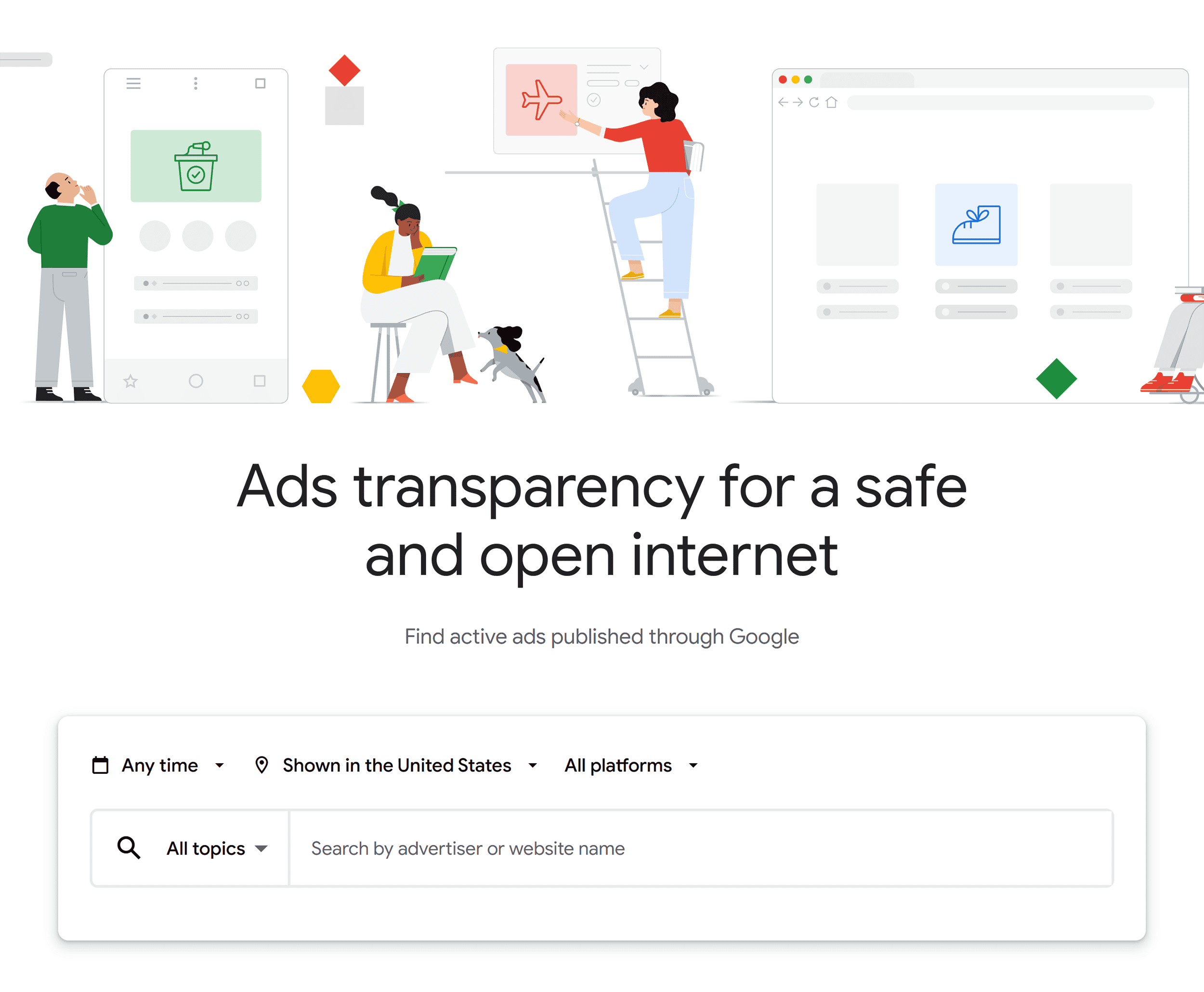
The Ads Transparency Center also lets you find trends in your competitors’ ads.
You can see their tone, messaging, and promoted offers. This makes it easier to refine your own strategy and stay competitive.
Semrush
Semrush is a great tool for conducting competitive research. I use it to find my PPC competitors, see the keywords they’re bidding on, and much more.
Let me walk you through how I use it. And, more importantly, what you should look for at every step.
Perform Competitive Analysis with the Advertising Research Tool
The first step in a Google Ads competitor analysis is identifying who your rivals are.
While this might seem obvious, you may be surprised. You could discover competitors you didn’t even know were bidding on your keywords.
Semrush’s Advertising Research tool simplifies this process.
Note: A free Semrush account gives you 10 searches in Advertising Research per day. Or you can use this link to access a 14-day trial on a Semrush Pro subscription.
To use it, simply enter your domain into the tool and click “Search.”
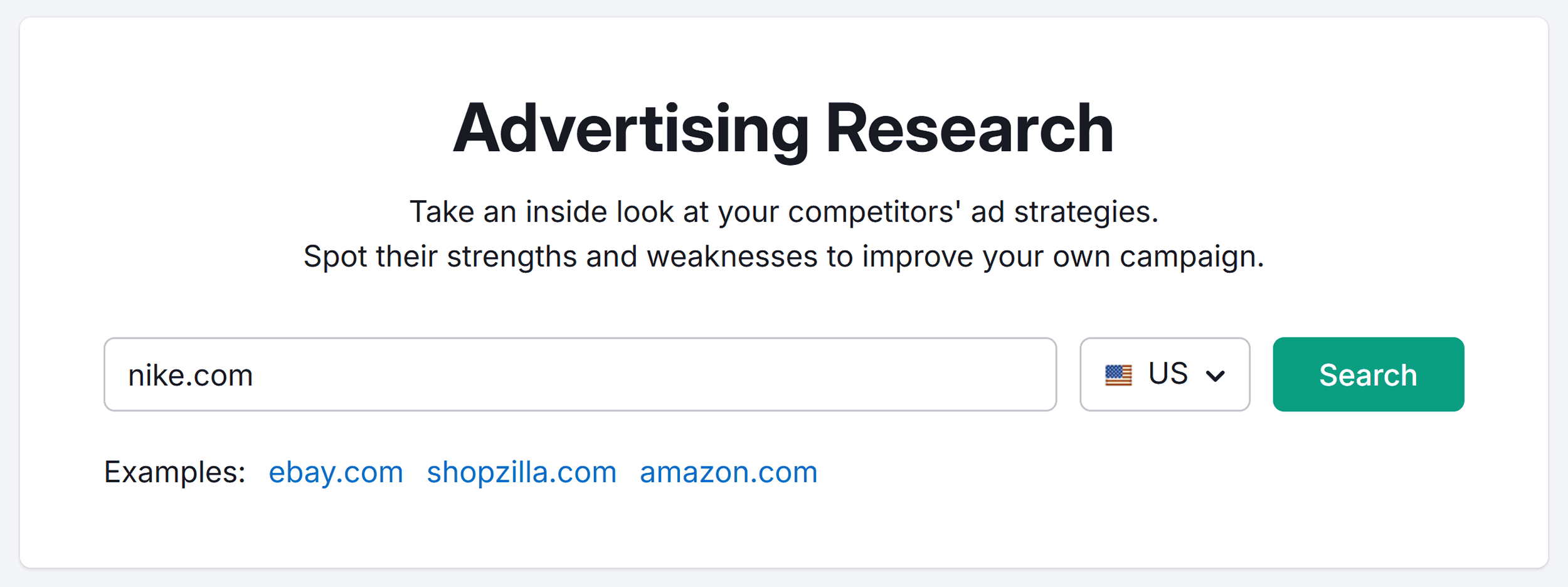
Next, click the “Competitors” tab.
Semrush will generate a list of domains competing with you for ad space.

From here, you’ll be able to see valuable metrics such as:
- The number of common keywords shared between you and your competitors
- Paid traffic and the paid traffic price for each competitor
With this data, you can easily spot your main rivals and uncover potential threats or opportunities for your ad campaigns.
Target High-Value Keywords with the Positions Report
After identifying your competitors, the next step is to dive deeper into their ad campaigns. You can do this with the Positions Report, which is part of Semrush’s Advertising Research.
This powerful tool reveals the exact keywords your competitors are bidding on. It also shows their positions, search volume, cost-per-click estimates, and the traffic those keywords generate.
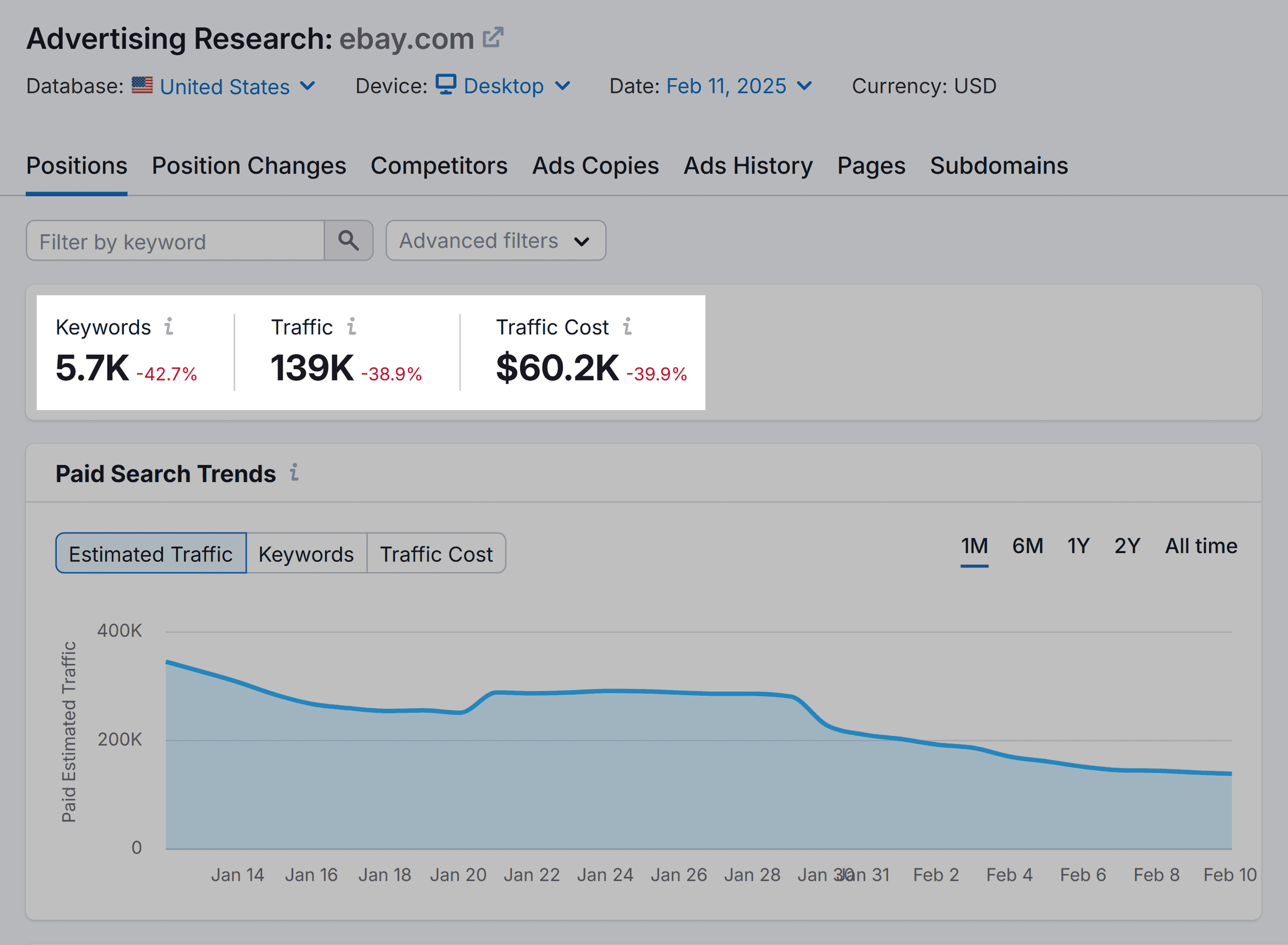
Here’s what to focus on when reviewing the report:
- High-performing competitor keywords: These are the keywords your competitors consistently rank highly for. Targeting similar high-performing keywords can help you improve your ad visibility.
- Budget prioritization: A high CPC often shows where competitors are spending. With this insight, I can understand their strategy and adjust my own bids.
- Missed opportunities: Find keywords your competitors are targeting that you’re not. These could help you reach more people and get more traffic. For example, if your competitor ranks well for “affordable email marketing software,” but you only bid on “’email automation tool,” you might be losing potential customers.
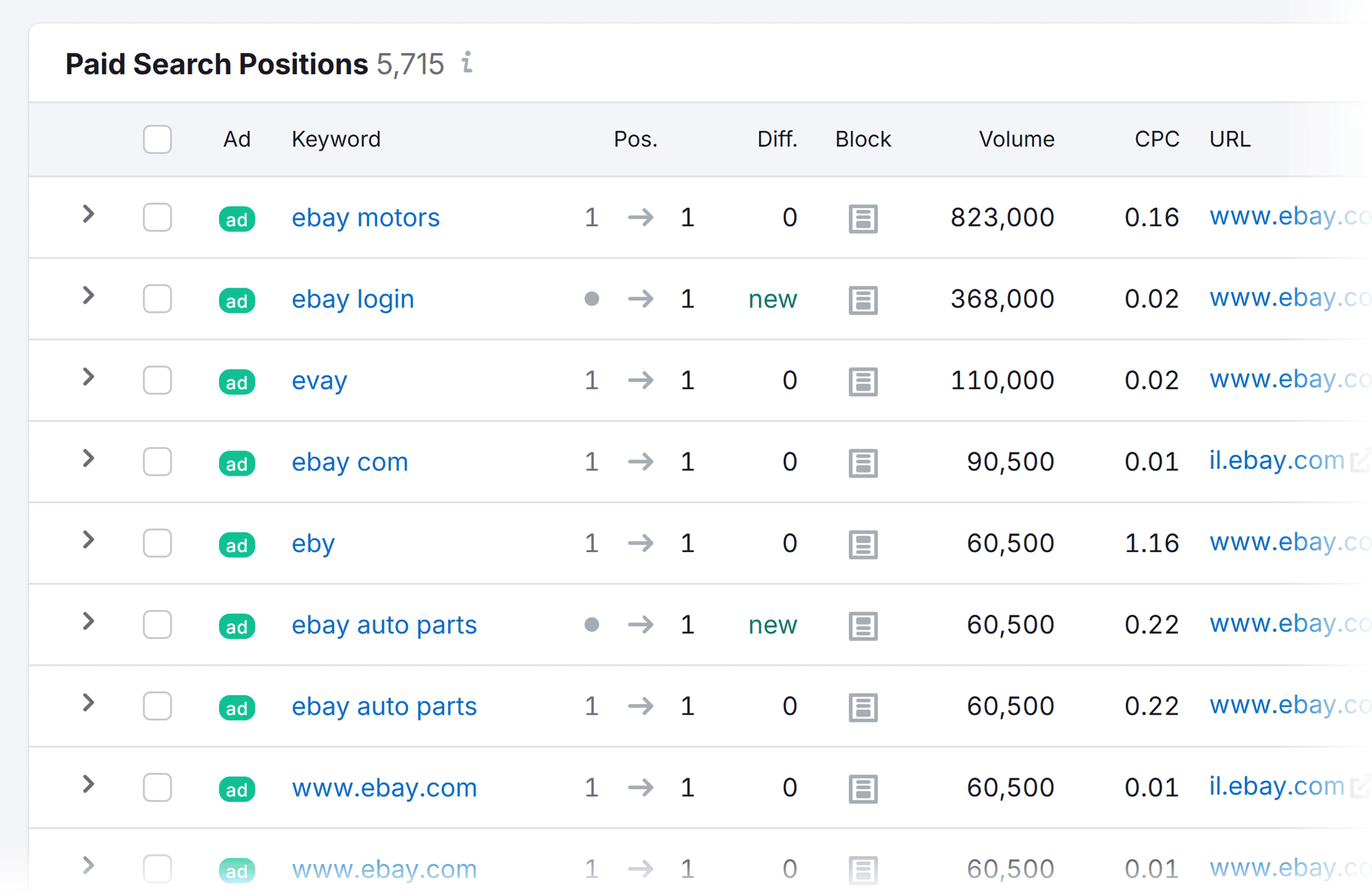
Track Trends Using the Ads History Report
The Ads History Report is another feature of the Advertising Research tool. It provides valuable insights into your competitors’ past campaigns. The report also offers a window into their evolving strategies over time.
Use this tool to track shifts in your competitors’ approaches and optimize your own campaigns.

I use the Ads History Report to identify patterns.
For example, a competitor may ramp up promotions during the holiday season. With this data, I can prepare my own campaigns in advance. I can then adjust ad copy, bids, and targeting for key shopping periods.
I also spot trends by tracking messaging. For instance, I learned that a competitor emphasized discounts in the spring and then shifted to product quality in the summer. With this information, I can adapt my own messaging to resonate with customers at the right time of year.
Refine Your Google Shopping Strategy with the PLA Research Report
If you’re in ecommerce, use Semrush’s PLA Research tool. It’s invaluable for understanding your competitors’ Google Shopping strategies.
I use this report to provide insights into the exact elements driving my competitors’ product ads. This helps me refine my own approach.
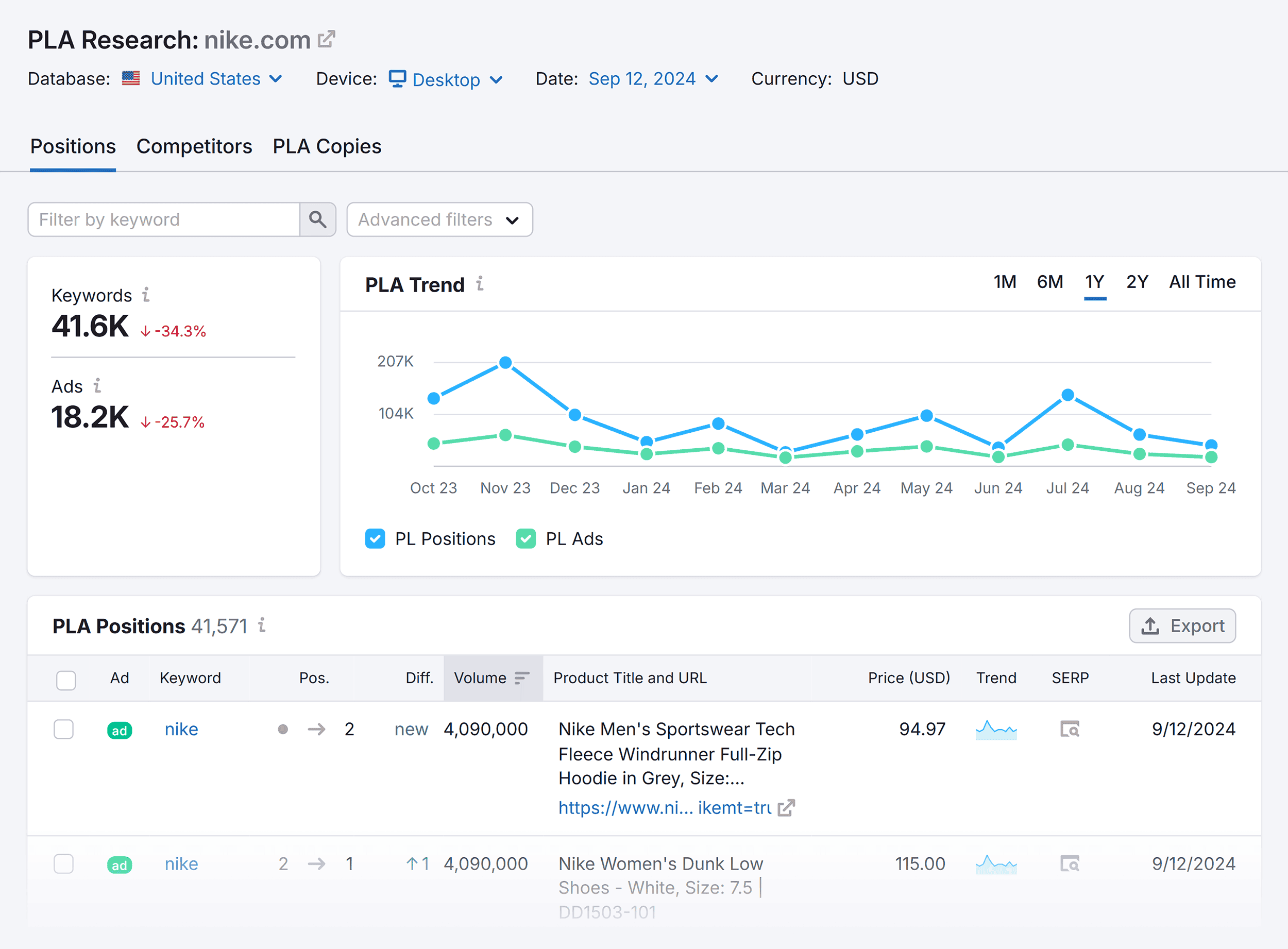
The PLA Research Report shows you:
- Keywords triggering shopping ads: You’ll see the keywords behind your competitors’ product ads. This will help you find high-converting terms to target.
- Ad positions: The report shows where your competitors’ ads appear. It helps you gauge your market’s competitiveness and adjust your bids.
- Product details: Gain insights into the advertised products, including pricing and promotional strategies. This can highlight areas where you might adjust your pricing or promotional offers to stay competitive.
How to Use Your Google Ads Competitor Analysis Effectively
Now that you’ve gathered some data, the real value comes from using those insights to improve your own Google Ads campaigns.
Find and Refine Keyword Opportunities
Analyzing your competitors’ keyword strategies can often reveal gaps in your own approach.
A competitor selling analytics software might prioritize broad keywords, like “free marketing tools.” But, they might neglect specific queries, like “engagement tracker for small businesses.”
If your product serves that niche, target those underused keywords. It could give you a competitive edge.
At the same time, use negative keywords to exclude irrelevant searches, like “cheap alternatives.” This will ensure your ads reach the right audience.
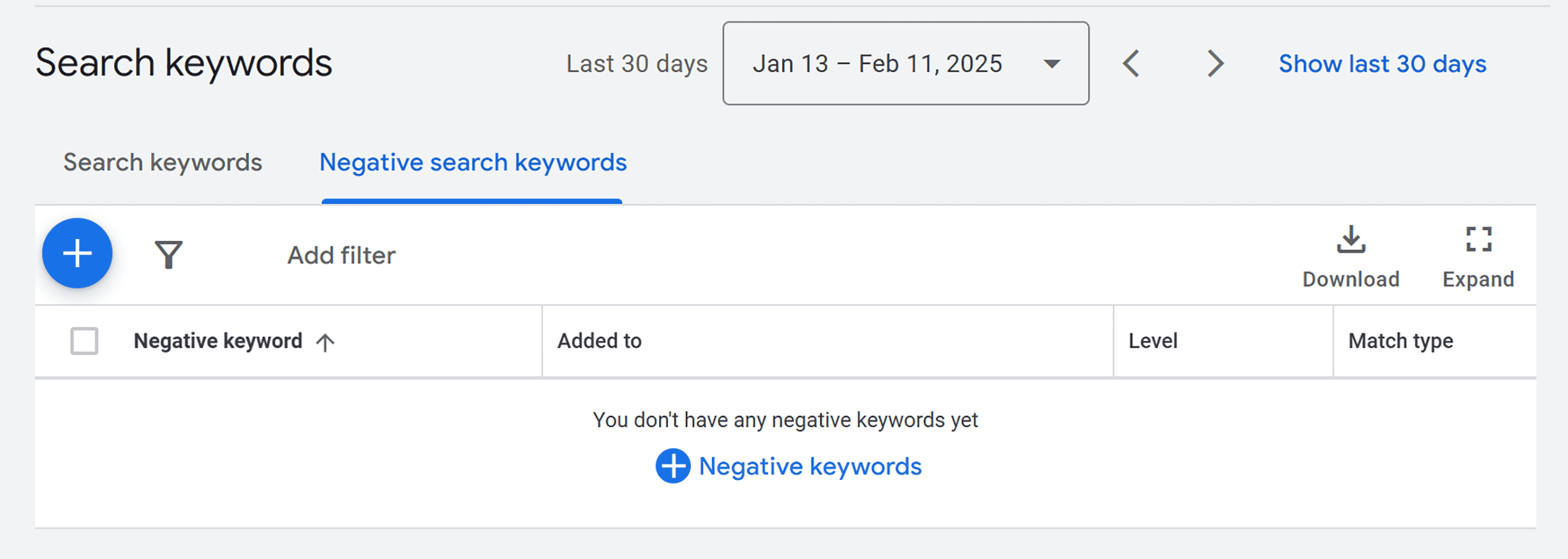
This small change can save thousands in wasted ad spend. It will focus your budget on high-intent users searching for your product.
By making these small yet impactful changes, you can improve your campaign’s efficiency and boost your ROI.
Improve Your Ads Copy
A Google Ads competitor analysis can help you craft messaging that better resonates with your audience. You can stand out by finding gaps in your competitors’ messaging. Then, use a different approach to connect more with potential customers.
For example, if a competitor’s ad offers “20% Off Marketing Tools,” I can counter it by emphasizing my product’s quality. I might say, “Top-Rated Tools to Grow Your Business.”
Similarly, if their CTA is generic, like “Learn More,” I can use a more specific CTA, such as “Get Your Free Custom Growth Plan.”
These small changes can significantly affect how your audience perceives your brand. To find out which messaging resonates best, create an ad variation and do A/B testing.
For example, compare “Top-Rated Tools” to “Award-Winning Marketing Solutions.” Measure the impact on click-through rate (CTR) and Quality Score.
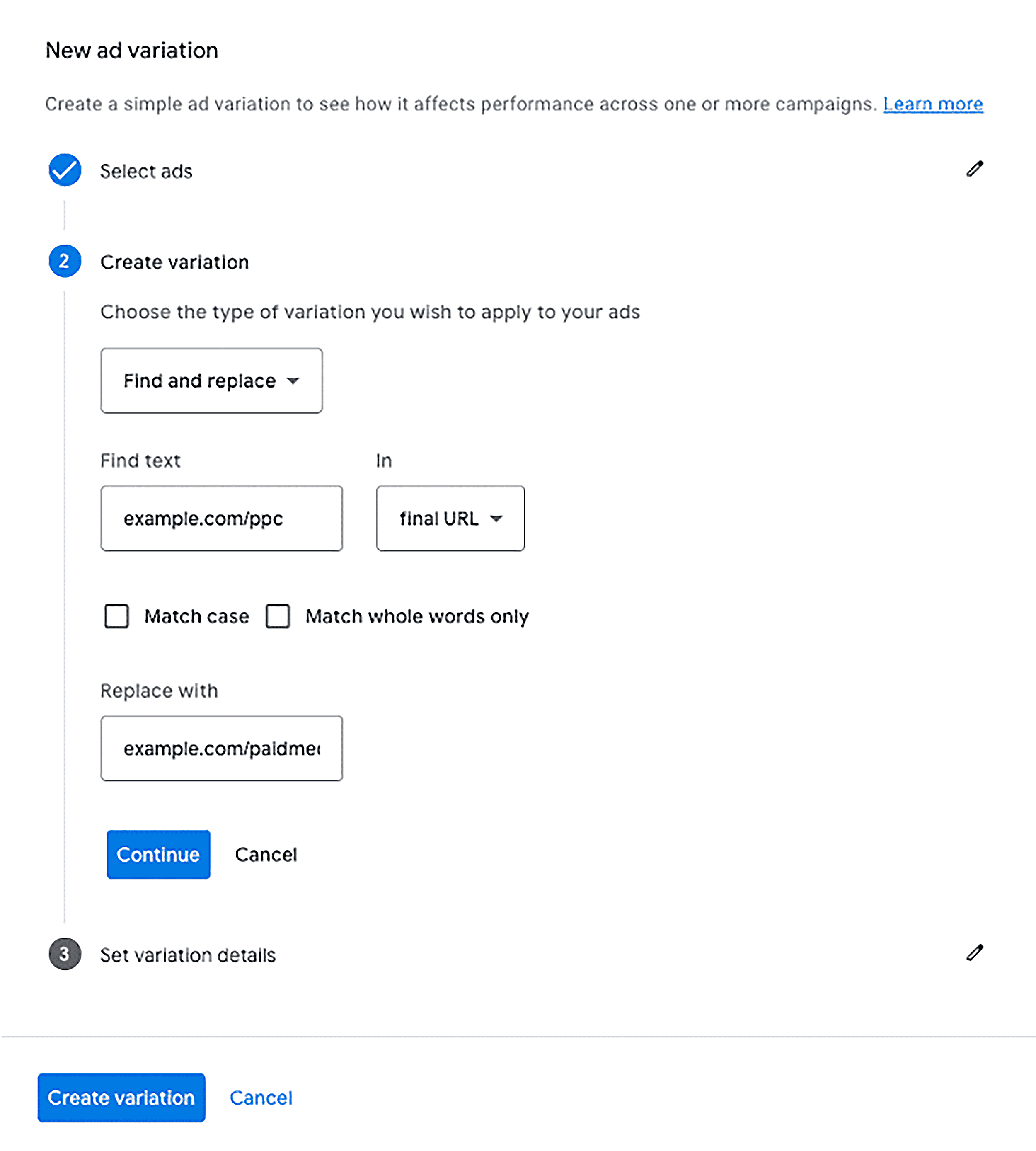
These experiments can boost your ad performance and fine-tune your strategy for better results.
Set Up Competitor Monitoring Alerts
Staying on top of your competitors’ activities is crucial for proactively adjusting your strategy.
By tracking their ad changes and keywords, you can find shifts in their campaigns. This lets you seize new opportunities before they do.
Use tools like SpyFu, Google Alerts, and Semrush to monitor competitor movements.
SpyFu’s PPC alerts notify you of changes in competitors’ paid campaigns and alert you when competitors add or remove keywords or update ad copy. This helps you respond in real time.
Not all tools alert you to every competitor activity. So, it’s important to conduct regular manual reviews.
In Semrush’s Advertising Research, you can track ad creatives, landing pages, and keyword shifts.
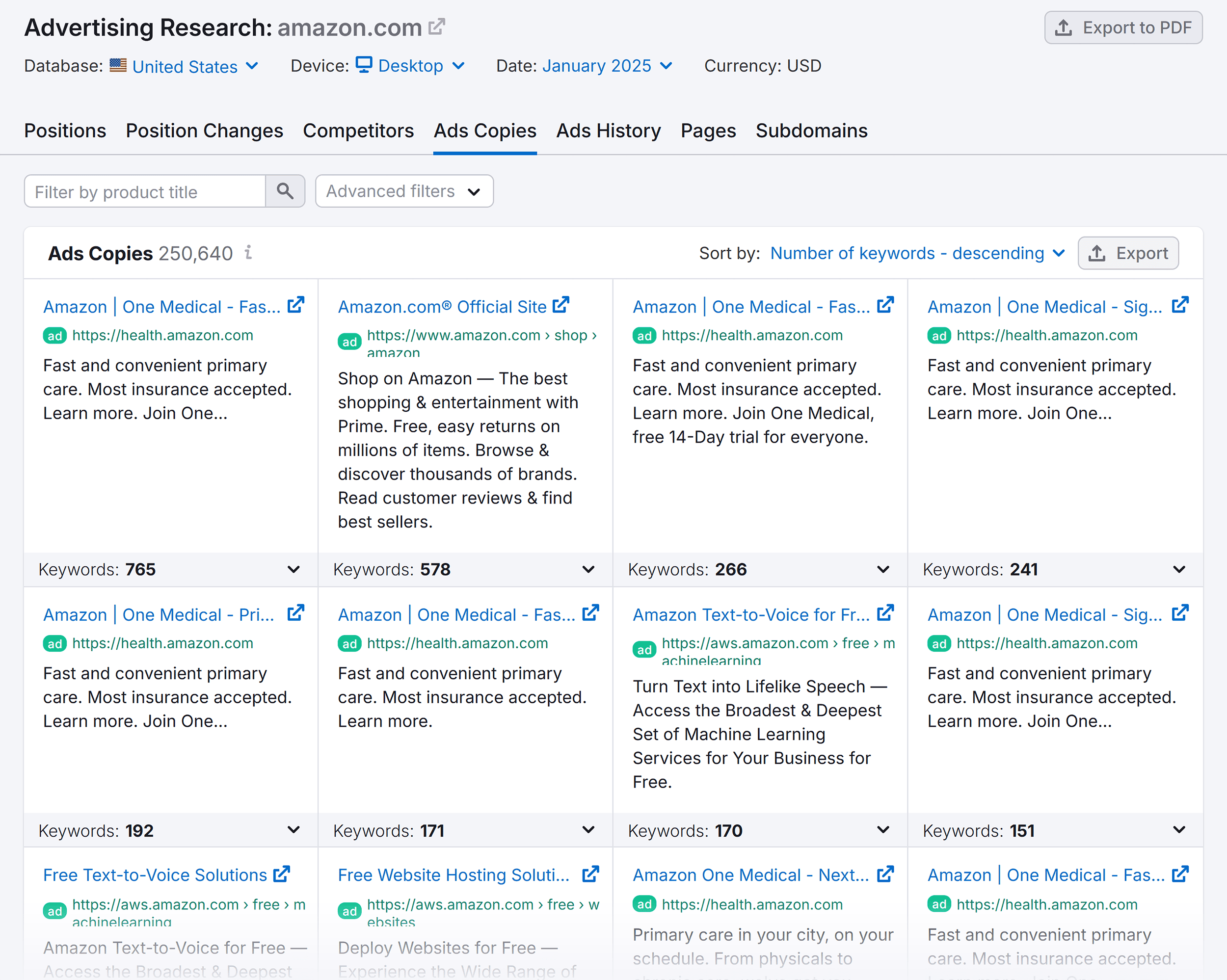
For example, say you notice a competitor suddenly bidding on “affordable CRM for startups.”
If you offer a similar product but haven’t targeted that phrase, this insight could prompt you to create ads for it. This would ensure you don’t miss out on valuable traffic.
Monitor competitor changes, both automatically and manually, to refine your strategy, optimize ad spend, and stay ahead of the competition.
Optimize Your Landing Pages
Your competitors’ landing pages are a goldmine of insights. They reveal what resonates with your shared audience. These pages hold strategies that work for them and can help you find ways to improve your own approach.
Here’s what to look for when evaluating competitor landing pages.
Design Elements
Pay attention to the overall design—whether it’s minimalistic or flashy. Look for interactive features that engage visitors, such as videos or images.
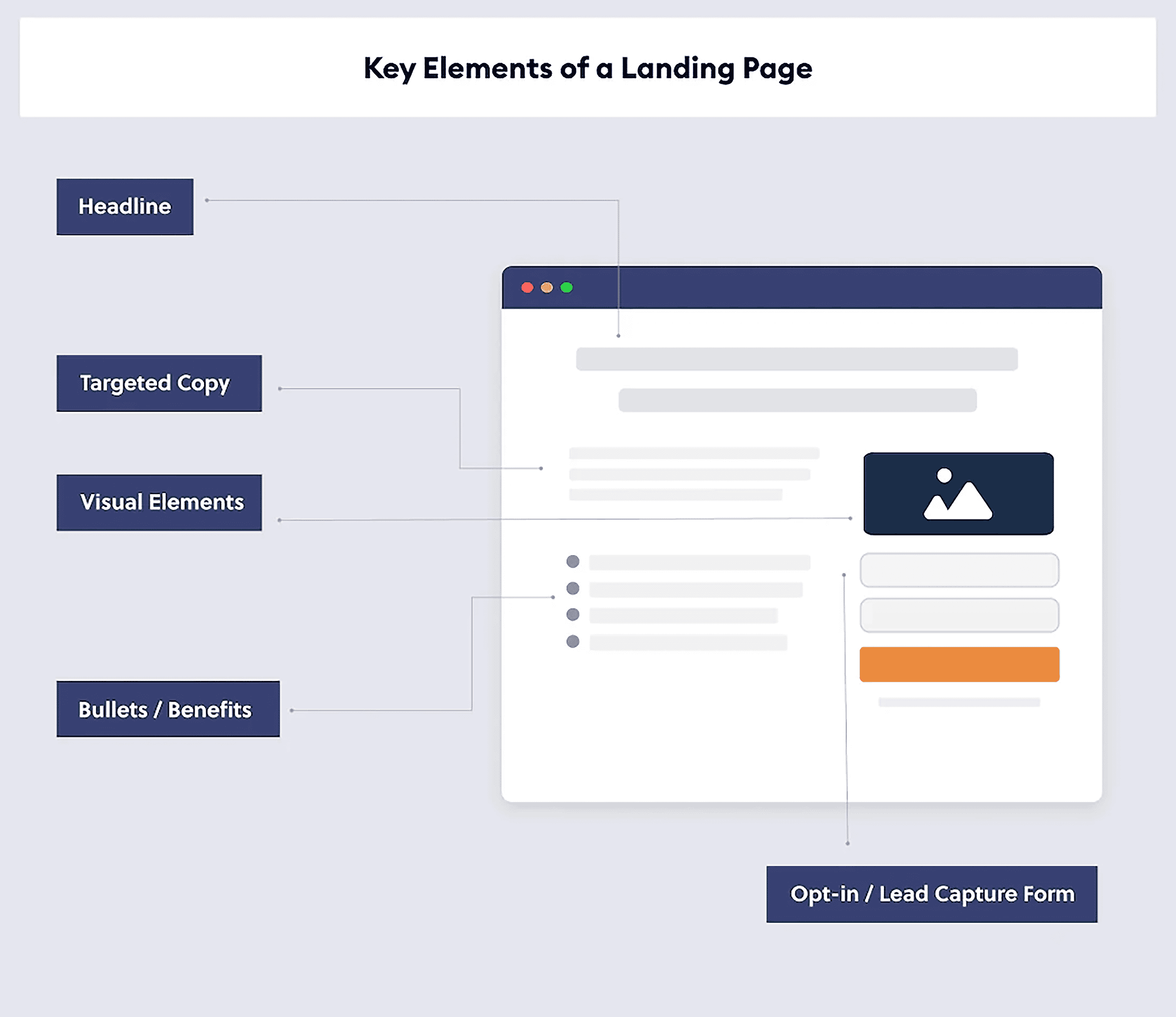
Value Propositions
Identify the key benefits they emphasize, such as price, quality, or unique selling points that set them apart from competitors. This will help you understand what motivates their audience.
User Experience
Check the page’s navigation, CTA visibility, and load speed. Ensure it’s mobile-friendly and offers a smooth, conversion-focused journey.
For example, let’s say a competitor selling SaaS tools uses a chatbot to engage visitors. You could A/B test adding one to answer questions, offer a guide, or schedule a demo. Small changes like this can lower bounce rates and boost conversions.
Remember, a landing page that works well today may not perform as effectively in the future.
To continually optimize, A/B test different elements—such as headlines, CTAs, images, and layouts. This helps you find the best combinations for driving conversions. It also keeps your landing pages competitive.
Allocate Budget Accordingly
To maximize your ROI, use insights from your Google Ads competitor analysis. Prioritize high-performing keywords and adjust your ad spend accordingly.
Focus your budget on the best-performing keywords. You can cut spending on underperforming or overly competitive ones.
For example, imagine you’re running ads for “project management software.”
You notice Asana dominates the top position with a high CPC. It may be smarter to target “project management tools for small businesses” at a lower CPC.
This approach lets you maintain visibility while improving cost efficiency.
It also allows you to capture relevant web traffic without fighting for the top spot on a saturated keyword.
Another option is to use Google’s “Experiments” feature. It can test different bidding strategies, ad creatives, and other campaign settings.
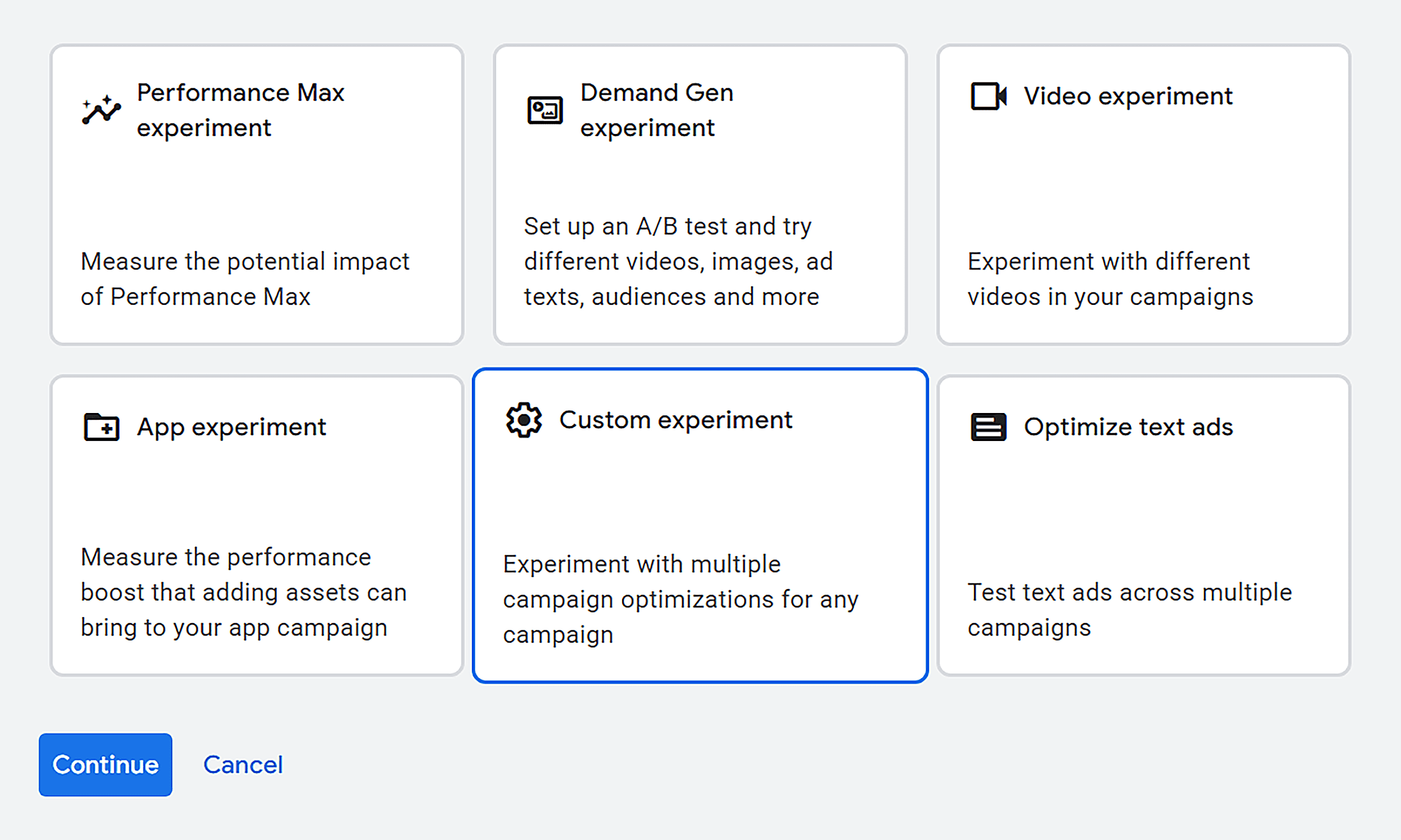
Running these experiments lets you make data-driven decisions. You can allocate your budget better and improve your campaign’s performance.
Regularly review keyword performance to spot trends or shifts in audience behavior. By fine-tuning your strategy, you can ensure your ads consistently reach the right audience without overspending.
Improve Your Quality Score
A high Quality Score helps you get better ad positions and lower costs, making your campaigns more efficient.
Use your Google Ads competitor analysis to find ways to improve your score and stay ahead of the competition.

Here are key areas to focus on:
- Expected CTR: Write attention-grabbing ad copy to boost your CTR and improve your Quality Score. If competitors use generic headlines like “Best Accounting Software,” test something more engaging. Try “Cut Bookkeeping Time in Half With Our Smart Tool” to highlight clear benefits.
- Ad relevance: Your keywords, ad copy, and landing pages must align and address the user’s search intent. This alignment ensures a smooth user experience, which Google rewards with a higher Quality Score.
- User experience: Optimize landing pages for speed and mobile use. Ensure easy navigation to guide users to actions, like purchases or forms. A good experience boosts Quality Score and ad performance.
Transform Insights Into Action with Traffic Think Tank
A Google Ads competitor analysis is more than a one-time exercise—it’s a dynamic, ongoing process.
Use tools like Semrush, Auction Insights, and Google’s Ads Transparency Center. They can help you find strategies that set your campaigns apart.
The key is to act on these insights consistently and strategically.
If you want to master more advanced SEM strategies like these, there’s no better place than TTT Academy.
Join today to get exclusive access to actionable training, expert insights, and a community of professionals who are as obsessed with growth as you are.
Semrush
- Semrush – Best overall SEO functionality
- Google Search Console – Best free (partial) data from Google
- Advanced Web Ranking – Best for reporting
- SERPWatcher by Mangools – Best for bloggers and small teams
- Ahrefs – Best for keyword analysis
- SEO PowerSuite – Best affordable option
- SEO Monitor – Best for forecasting
- Local Viking – Best for local SEO map tracking
- Nozzle – Best for data visualization
- ProRankTracker – Best for agencies and SEO professionals